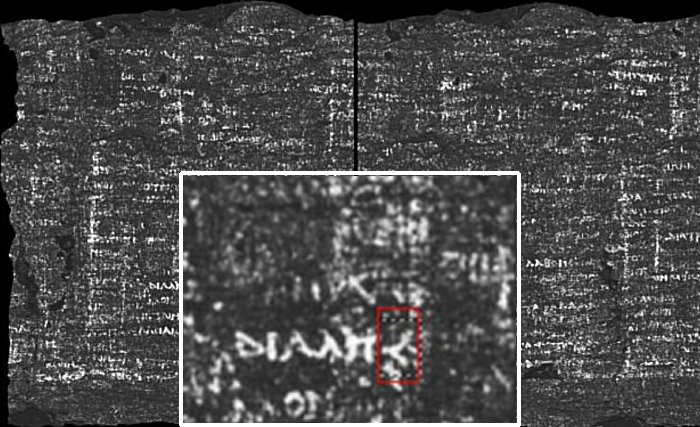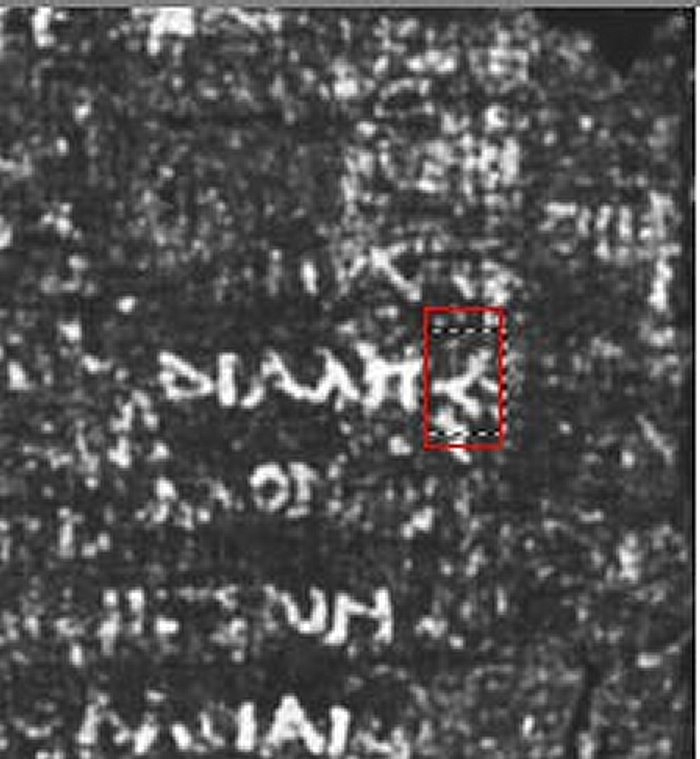Conny Waters – AncientPages.com – Researchers started deciphering text preserved on papyrus scrolls from the ancient site of Herculaneum.
Researchers have achieved a significant milestone by generating the first image of the interior of scroll PHerc. 172. Image credit: Vesuvius Challenge
The artifact – housed at the University of Oxford’s Bodleian Libraries in the United Kingdom – is, at the same time, a valuable historical document, containing information about the history and culture of ancient Rome and Greece.
It represents the fifth intact Herculaneum scroll, which the scientists make attempts to virtually unroll. Their work is a part of the Vesuvius Challenge, a competition launched in March 2023 to bring the world together to read the Herculaneum scrolls.
Researchers have achieved a significant milestone by generating the first image of the interior of scroll PHerc. 172, buried during the eruption of Mount Vesuvius in 79 AD, and representing one of three Herculaneum scrolls located in the Bodleian Libraries.
This document provides a significant view of the papyrus, highlighting several columns of text.
Notably, it reveals about the last 26 lines of each column, offering valuable insight into its contents. It also shows a considerable part of the papyrus.
While University of Oxford scholars work to interpret the text, the Vesuvius Challenge invites others to join in deciphering it.
One of the first words to be translated was the Ancient Greek d?at??p? meaning ‘disgust’, which appears twice within a few columns of text.
This filler character provides evidence that this roll is a finished product rather than a working copy. Image source
Since the scroll was scanned at the Diamond Light Source in Harwell in July 2024, the Vesuvius Challenge team has used AI to enhance text clarity from the images.
Researchers are refining the image with a new segmentation approach to improve text coherence and clarity and possibly reach the scroll’s end, where the title might be preserved.
The Oxford scroll, donated in the early 19th century by Ferdinand IV, King of Naples and Sicily, is unique for its ink’s chemical composition, which is clear in X-ray scans.
Researchers suggest the ink may contain a denser contaminant, like lead. Further testing is needed to identify why this ink is more legible than other scrolls in the Vesuvius Challenge.
The machine learning for this project detects ink presence but doesn’t understand language or recognize characters. Therefore, human scholars handle transcription and translation.
The interior of the scanned scroll. Image credit: Vesuvius Challenge
The AI functions like 18th-century copyists, replicating text without comprehension. This lack of understanding ensures no speculative changes are made, preserving the original content’s integrity.
“It’s an incredible moment in history as librarians, computer scientists and scholars of the classical period are collaborating to see the unseen,” said Richard Ovenden, Bodley’s Librarian & Helen Hamlyn Director of the University Libraries.
“The astonishing strides forward made with imaging and AI are enabling us to look inside scrolls that have not been read for almost 2,000 years.”
This project is a perfect example of libraries, humanities and computer science complementing each other’s expertise by recovering and studying ancient texts to understand our common past.
The Vesuvius Challenge was created by Dr Brent Seales, Nat Friedman, and Daniel Gross, the initiative has rewarded teams across the world for their discoveries, including first ink detection and various open-source software contributions.
Written by Conny Waters – AncientPages.com Staff Writer











